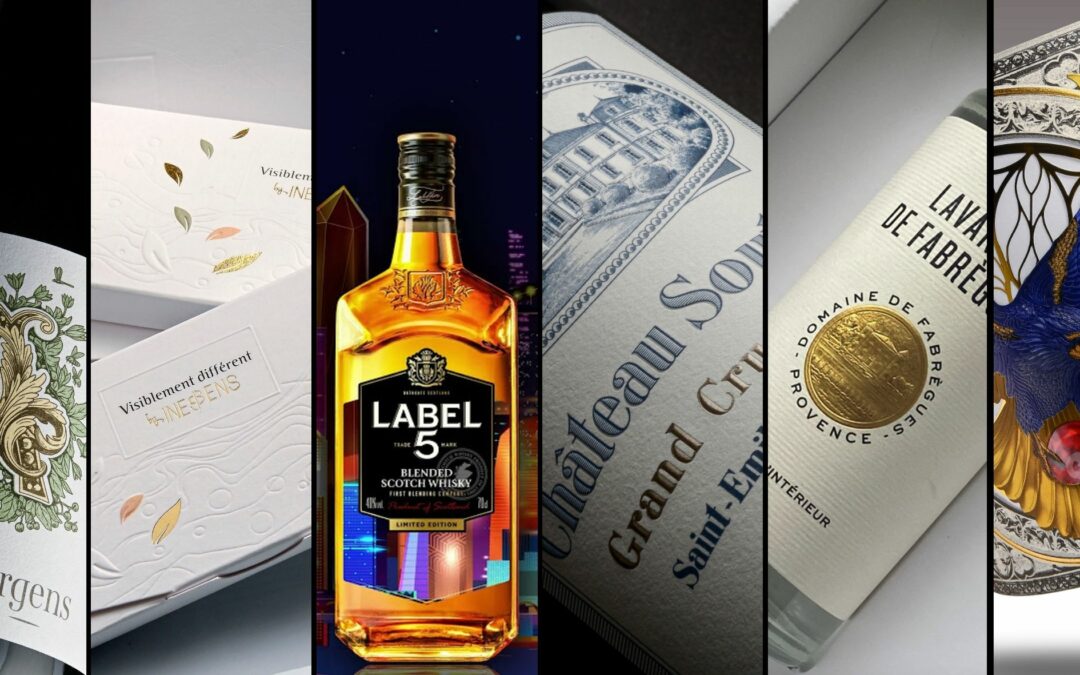Packaging in the Luxury Sector: Exploring New Trends
In the world of luxury, packaging doesn’t just protect a product, it enhances it, creating a sensory experience from the very first contact with the consumer. Over the years, luxury brands have rethought their approach to packaging to reflect their values and meet changing consumer expectations.
Discover the new packaging trends in the luxury sector.
1. Eco-Luxury:
Growing awareness of environmental issues has prompted many luxury brands to adopt more sustainable approaches to their packaging. Recyclable materials, minimalist packaging and eco-friendly alternatives are increasingly popular. Brands are also turning to innovative, eco-friendly materials such as recycled paper or bio-sourced and FSC®-certified wood to reduce their environmental footprint while preserving their luxury image.
At Inessens, our commitment is reflected in eco-designed alternatives such as our collection of natural pigments and our Clarens paper, developed in collaboration with Clairefontaine. In addition, 7 of our 9 sites are FSC® certified.
We are convinced that it is possible to combine innovation and sustainability.
2. The Customer Experience
In a market where competition is fierce, luxury brands are vying with each other in their ingenuity to offer unique customer experiences. Some even go so far as to transform the act of purchase into a veritable ritual, with theatrical box openings. At Inessens, we understand the importance of every detail in this experience. Our top-of-the-range materials, such as wood and velvet, not only identify our products, they transform them into sensory works of art. Every touch, every glance at our packaging is an immersion in luxury and exclusivity, where gesture becomes as essential as the visual.
But the customer experience doesn’t stop there. As well as the primary packaging, we have also focused on the secondary packaging. The box is much more than just an envelope; it’s the first tangible contact with our customer’s product. That’s why we’ve developed cases, sheath boxes and even a discovery kit that invites users to enjoy a sensory experience right from the start.
3. Personalisation
With the aim of offering a real experience, luxury brands are using personalisation to seduce their customers. Tailor-made, engraved packaging with serial numbers is a trend that can be seen particularly in the spirit sector. Inessens has developed an innovation that perfectly matches this need. The random data, produced digitally by our printing house DIGIT LABELS, makes each label unique.
4. Reinventing the classics:
Luxury brands are constantly looking for ways to stand out while preserving heritage and tradition. This is where the reinvention of classics makes sense. Leading brands are rethinking traditional packaging codes by playing with shapes, textures and colours. They are opting for clean lines, bold designs and patterns inspired by traditional craftsmanship to capture attention and inspire admiration.
At Inessens, we understand the importance of this reinvention, particularly when it comes to wine. By creating labels that are clean yet classic and elegant in our approach, we enhance the product while preserving its timeless essence. For example, for Bordeaux or Burgundy wines, we adopt a minimalist approach by proposing labels with no legal information on the front, thus emphasizing the purity of the design.
In wine, each appellation is associated with a precise code, enabling consumers to recognize it at first glance.
Some brands, particularly in the cosmetics sector, are investing in genuine hot foil work. By structuring the hot foil, it becomes a badge, a symbol of premiumisation, or even a real piece of jewellery, adding a touch of luxury and exclusivity to their products.
5. Integration of traceability and anti-counterfeiting solutions:
With the advent of technology, luxury packaging is increasingly incorporating digital elements either to offer a multi-sensory experience or as a solution to combat counterfeiting. QR codes, NFC chips and mobile applications give customers access to exclusive content, personalised tutorials and product information. This fusion of the physical and digital worlds creates an immersive and interactive experience, strengthening consumer engagement with the brand.
Inessens has also integrated these solutions into its technologies. TLS, our printing house based in the Paris region for over 50 years, specialises in traceability and security labels. At TLS, we deploy solutions with identification or traceability labels: numbered labels with sequential or random data, simple numbered labels or complex forms through to labels with linear or 2D codes. Today, the majority of uses are in the medical sector, but these techniques can also be applied to the luxury goods sector.
The ‘Éloge du sublime’ is a perfect example.
This label was developed by four of our printing houses. We imagined a label without intellectual barriers, beautiful, rich in meaning, complex in terms of printing techniques, going all the way without setting a cost limit, forgetting the notion of ‘reasonable’. That’s how we came up with what could well be the most expensive label in the world! With it, Inessens proves its ability to create dreamt labels that captivate customers. It embodies luxury, excellence and distinction.
The label contains an NFC chip, guaranteeing the authenticity of the product and its traceability, which is a guarantee of confidence for consumers.
In conclusion, packaging in the luxury sector is much more than just an envelope for a product. It embodies the very essence of the brand, tells a story and creates an emotional connection with consumers. New trends emphasize sustainability, personalisation, technological innovation and attention to detail, offering unforgettable luxury experiences to customers around the world.
